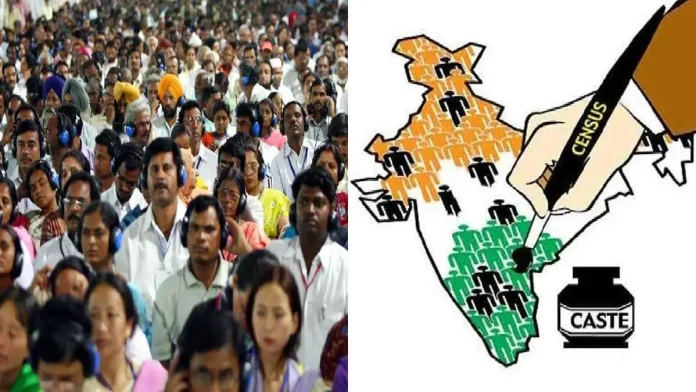On June 16, 2025, the Ministry of Home Affairs issued an official gazette notification under Section 3 of the Census Act, 1948, formally initiating the much-delayed 16th Census of India, scheduled for March 1, 2027—with critical exceptions and pioneering features to address India’s evolving demographic landscape.
Census 2027: Key Timelines & Reference Dates
- Main Census Date: 00:00 hrs, 1 March 2027 nationwide
- Snow-bound Regions (Ladakh, parts of J&K, Himachal Pradesh, Uttarakhand): 00:00 hrs, 1 October 2026
- Gazette Issued: Officially published through Registrar General & Census Commissioner Mritunjay Kumar Narayan
This two-tier scheduling ensures that logistical and climatic challenges in remote regions are handled separately and effectively
Two-Phase Digital Census
- House Listing Operation (HLO)
- Data: Building structures, household amenities, assets
- Timeline: Days to months before March 2027 (conducted in 2026 for snow-bound areas)
- Population Enumeration (PE)
Historic Caste Enumeration
For the first time since 1931, caste will be enumerated on a national scale—and unreservedly, including all caste groups
Why it matters:
- Enables fine-tuning of social welfare, affirmative action, and government policies
- Offers visibility on caste-based demographic trends critical for delimitation, seat reservation, and resource allocation
Fully Digital: A First for India
- Use of dedicated mobile apps, tablets, and real-time data entry in 16 Indian languages
- Self-enumeration Portal allowing citizens to fill their details digitally, later verified by enumerators
- Pre-testing done in 2019, deploying sample apps across 76 districts to ensure system readiness
Outcome: Faster data collection, better accuracy, and enhanced transparency.
Massive Preparations & Workforce
- Approximately 30–34 lakh enumerators and supervisors (mainly teachers), plus 1.2–1.3 lakh higher-level officials, will be deployed
- State-level Census Coordination Committees, under Chief Secretaries with local bodies, have been active since 2019
- Pre-test surveys in 2019 included 6,000 enumerators covering 26 lakh people across rural and urban India
Speed & Data Security
- Government aims to publish final census results within 9–12 months—a major leap from previous delays
- Stringent measures are planned to ensure data security, from collection to storage, especially amid digital risks
Constitutional & Policy Significance
- Article 82: Provides basis for delimitation of constituencies
- Articles 330 & 332: Relate to SC/ST reservation based on updated data
- Caste census data will support or modify affirmative action policies and future reallocations
Why the Delay?
- Census scheduled for 2021 was postponed due to COVID-19, administrative delays, criticisms over NPR/NRC linkage, and opposition over caste enumeration
- Preparations began back in 2019, allowing thorough groundwork despite postponements
Leadership Oversight
- Union Home Minister Amit Shah reviewed preparations alongside Home Secretary and senior officials in June 2025
- Emphasis on digital readiness, caste inclusion, and maintaining data privacy were key focus areas
In Summary
- Official gazette notification issued June 16, 2025
- Digital-first two-phase census, with self-enumeration
- Historic caste census after 90+ years
- Data speed: 9–12 months, secured digitally
- Modern tools + old constitutional linkages—resetting demographic intelligence for India’s next decade
India’s census is not just a counting exercise—it’s the backbone of policy decisions, democracy, and consumer analytics.
The strategic digital leap and caste data inclusion mark this as a transformative census—one that will reshape planning, representation, and resource distribution far into the future.


